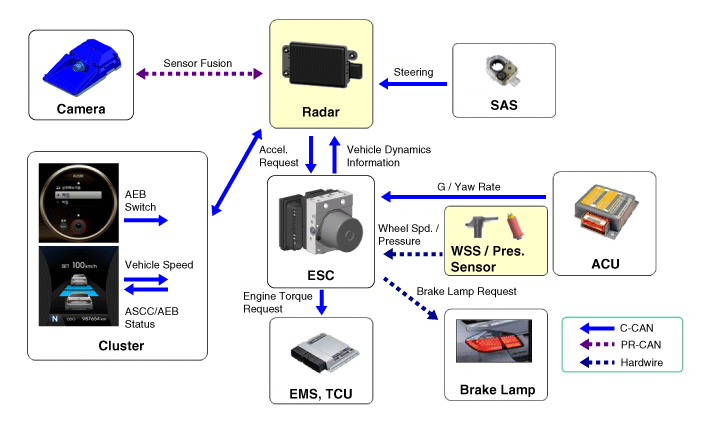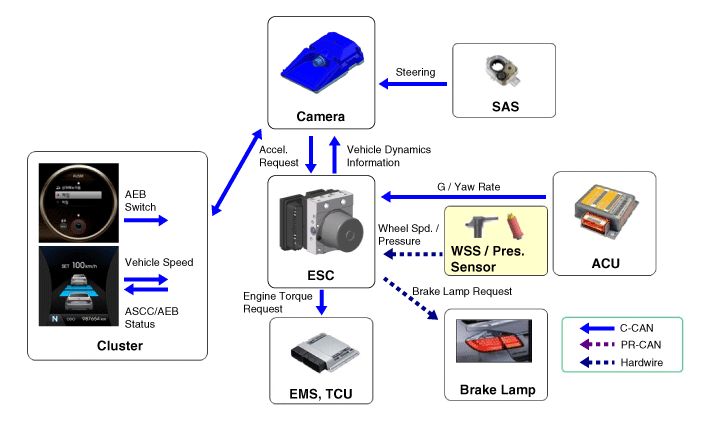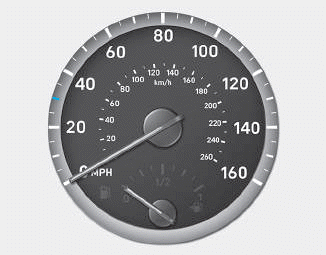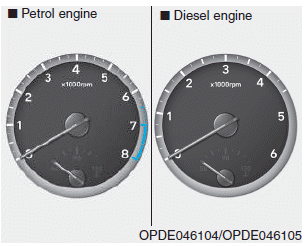Hyundai i-30: Autonomous Emergency Braking (AEB) System / Components and components location
Hyundai i30 (PD) 2018-2025 Service Manual / Brake System / Autonomous Emergency Braking (AEB) System / Components and components location
| Components |
The following is the configuration of the AEB system.
| – |
Detection device (radar and camera) that can recognize potential obstacles
in the front.
|
| – |
Human-Machine Interface (HMI) to warn driver or change settings.
|
| – |
Braking system to automatically brake the car
|
AEB, contrary to SCC (Smart Cruise Control), has to work on a stationary car
so the system uses the Fusion Target system to combine radar with camera.
[Sensor Fusion Type (MFC Camera + AEB Radar)]

[MFC Camera Type]

 Description and operation
Description and operation
Description
–
AEB system is designed to help avoid a potential collision or reduce
its impact when drivers applies inadequate, delayed or no brakes at
all to avoid a collision...
Other information:
Hyundai i30 (PD) 2018-2025 Service Manual: Components and components location
..
Hyundai i30 (PD) 2018-2025 Service Manual: Auto Head Lamp Leveling Unit
Schematic diagrams Circuit Diagram Description and operation Description According to driving environment and loading state of vehicle, head lamp lighting direction is changed to keep the driver's visibility range and to protect the driver's vision from glare, aiming at safety driving...
Categories
- Manuals Home
- 3rd Generation i30 Owners Manual
- 3rd Generation i30 Service Manual
- Cruise control
- Battery replacement
- Recommended lubricants and capacities
- New on site
- Most important about car
Gauges and meters
Speedometer

The speedometer indicates the speed of the vehicle and is calibrated in kilometers per hour (km/h) and/or miles per hour (MPH).
Tachometer

Copyright © 2025 www.hi30.net

